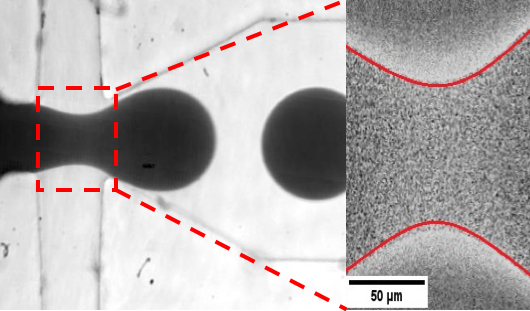
The transport of complex fluids and multiphase flows such as colloidal suspensions, polymers or emulsions is a common feature of natural as well as industrial processes at all length scales. By exploiting laminar flow conditions typical of microfluidics, it is possible to achieve precise control over a range of flow characteristics. One major benefit of microfluidic is the possibility to investigate the formation of emulsions by studying the dynamics of the formation of every single droplet. In particular, during droplet formation, a new interface is formed rapidly. The stability of the emulsion is guaranteed by the presence of surfactants. Depending on the relative size and affinity with the system, the surfactant molecules can migrate towards the new interface faster or slower than the speed at which the interface itself is created [Kovalchuk, Nowak, Simmons, Langmuir, 32(20):5069-77, 2016], although no microscopic study has been performed so far. The investigation of this phenomenon is fascinating and the implications are extremely interesting and important for both industrial and fundamental science reasons.
We are performing experimental study of the formation of a single droplet in a two-phase system (either water in oil or oil in water) in the presence of different surfactants by means of advanced optical techniques. In particular, we extensively use optical microscopy and fast camera recordings (up to 50,000 frames per second) in order to evaluate differences in the behaviour of the interface between dispersed and continuous phase. The velocity field is analysed with an innovative technique called Ghost Particle Velocimetry [Buzzaccaro et al., Phys. Rev. Lett., 111, 2013; Pirbodaghi, Vigolo et al., Lab Chip, 15, 2015; Riccomi et al. Chem. Eng. Res. Des. 133, 183–194, 2018]
